Since its release in 2013 I’ve been eyeballing the CollectA Przewalski’s horse (pronounced shuh-VAL-skee and also known as the takhi) for my collection, even though I didn’t really collect extant animals at the time. What I was collecting were dinosaurs and other prehistoric animals, and recently extinct animals too. So why the interest in this horse? Well, the Przewalski’s horse (Equus ferus przewalskii) is something special. This sub-species of E. ferus is thought to be the only truly wild species of horse that isn’t descended from feral domestic horses (E. ferus caballus) like those in North America and Australia. The Przewalski’s horse also very nearly became extinct. Although their population is now estimated at 1,900 animals, all of them are descended from 14 captive animals. As such, this is indeed a special horse, and one that fits as well into a display of Pleistocene mega-fauna as the muskox or pronghorn.
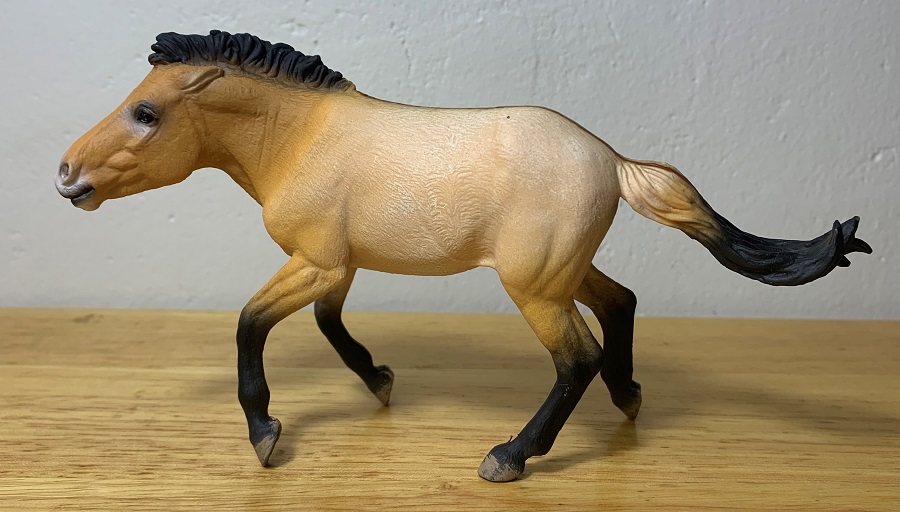
Since this figure has been recently retired, I decided that I better acquire it sooner than later and so here we are. That said, it isn’t the only figure of this animal. There is also a retired figure by Schleich and one by Safari that is still in production. The Schleich one commands a pretty high price, due to its rarity, and the Safari one is less dynamic without as much detail, so I opted for this one.
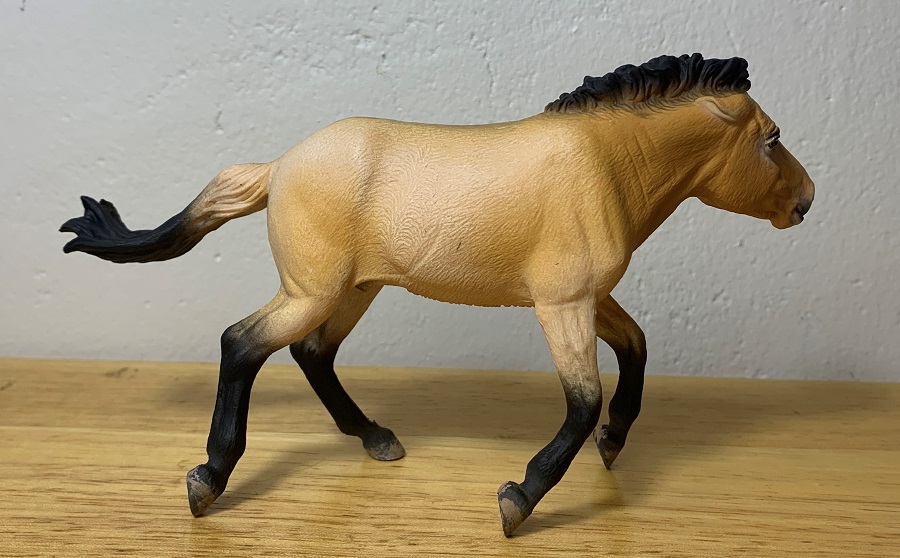
The CollectA Przewalski’s horse measures 6” (15.24 cm) in length, from nose to the end of its tail. It stands 2.9” (7.36 cm) tall at the shoulder. The actual horse stands 48–56” (121-142 cm) or 12-14 hands if we’re using horse measurements. Scaling the figure down from shoulder height puts it at 1/16 to 1/19 in scale.

The Przewalski’s horse is ancient in overall appearance. Cave paintings dating back 20,000 years depict visually similar wild horses and horses with this appearance would have been a common sight at that time period. Although the Przewalski’s horse now only inhabits isolated portions of Mongolia, China, and Kazakhstan the species E. ferus evolved in North America, and would have roamed North and South America, Eurasia, and North Africa during the mid-late Pleistocene.
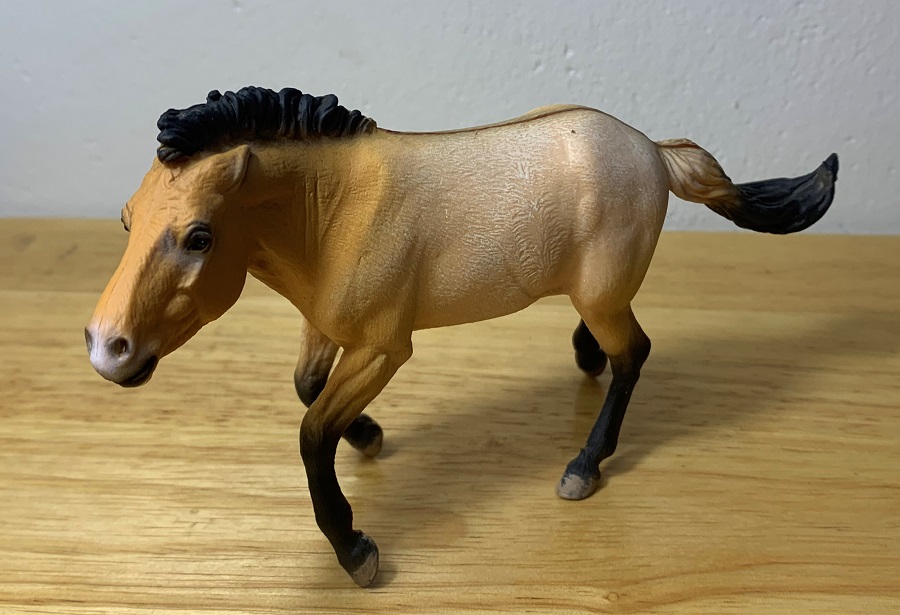
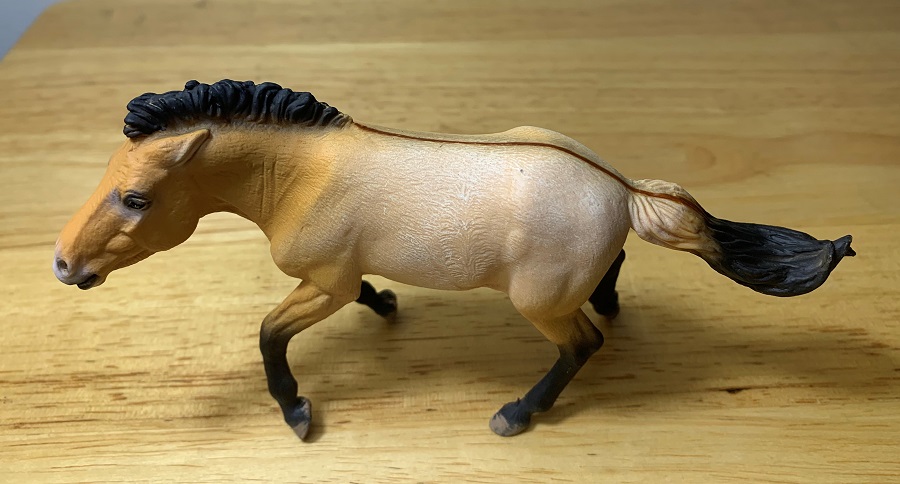
In color the Przewalski’s horse, and the figure, could be described as dun but I like the comparison to stirred cappuccino, made in a Smithsonian magazine article. The CollectA figure is darker around the head and neck and lighter colored around the flanks. The lower portion of the limbs are painted black but in the actual horse can be faintly striped. The lips, mane, and about 2/3rds of the tail are black, and a dark brown stripe runs down the back, from mane to tail. The muzzle and area below the eyes are painted white. The eyes and nostrils are painted with a black, shiny finish, giving them a lifelike appearance. The horse is a stallion and anatomically correct, the genitals are painted black.
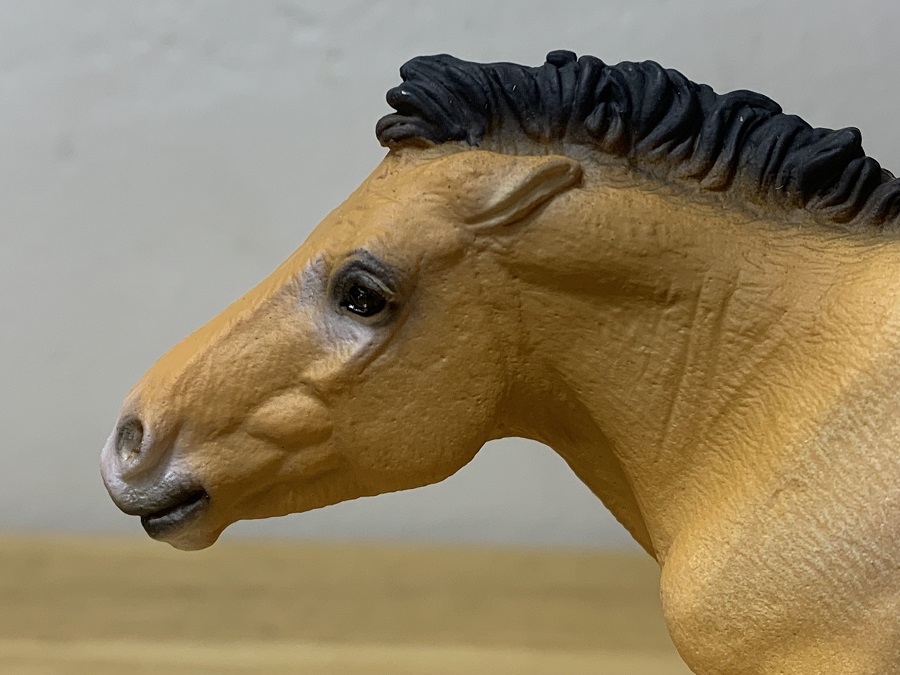
The Przewalski’s horse has a short and stocky build, with a large head and a short, erect mane. The figure succeeds well in sculpt, with much attention given to the musculature around the face and legs. In overall proportion though, something appears off. I think the problem is that the legs are too long. And in the totally scientific method of holding up the figure to pictures on a computer screen, my assumption seems to be correct. The Safari Przewalski’s horse appears to have more accurate proportions.

The CollectA figure is presented in a somewhat awkward running posture, with its ears pinned back against its head. This indicates that it’s either angry or frightened. Since it’s a stallion I figure that it’s likely charging a rival male. Przewalski’s horses live in family groups of roughly a dozen or so members, give or take, made up of mares and their fowls and a lead stallion. The stallions oversee the herd and defend it from rival males.

Whether you collect horses, extant animals, or prehistoric animals, a Przewalski’s horse should somehow find its way into your collection, be it the CollectA figure or otherwise. It represents an intriguing animal with extensive and important ties to paleontology, evolution, archeology, history, and conservation. Although no longer in production the CollectA Przewalski’s horse can still be found for retail price where CollectA figures are sold, for the time being.

Disclaimer: links to Ebay and Amazon on the AnimalToyBlog are affiliate links, so we make a small commission if you use them. Thanks for supporting us!




I also have a Przewalski’s horse, and for similar reasons as you! I bought the 2021 Mongollian stallion by CollectA for similar reasons, it being an ancient breed virtually unchanged since its domestication.
All three of the ‘major’ figures of Przewalksi’s horse seem to have their own issues. I didn’t like the pose of this CollectA figure and the Schleich figure to me looks too ‘stocky’. I went with Safari myself, but it’s face looks a little too geometric (although it doesn’t look as bad in-hand as it does online, I must admit).
But regardless of one’s choice, this is a (sub)species to acquire!!!!
I don’t think it’s just that the legs are too long – I definitely think the neck and back are too short. Like he’s missing a couple of vertebrae from each section of his spine, leading to a compressed look.
How I’d love to get the hacksaw and filler and stretch one of these guys out to better proportions – I didn’t know they were retiring soon, so perhaps now is my chance to get one while they’re still affordable, and not too rare to chop up!